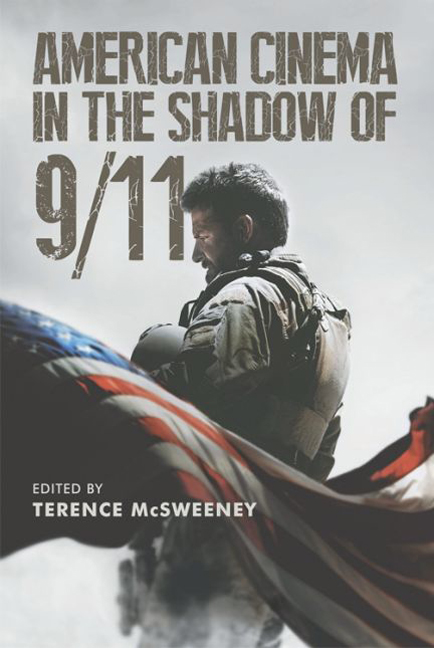Book contents
- Frontmatter
- Contents
- List of Figures
- Acknowledgements
- Foreword
- Introduction: American Cinema in the Shadow of 9/11
- Part I Dramatisations of the ‘War on Terror’
- Part II Influences of the ‘War on Terror’
- Part III Allegories of the ‘War on Terror’
- 11 ‘Daddy, I'm ScareD. Can We Go Home?’ Fear and Allegory in Frank Darabont's the Mist (2007)
- 12 The Terrible, Horrible Desire to Know: Post-9/11 Horror Remakes, Reboots, Sequels and Prequels
- 13 Post-9/11 Power and Responsibility in the Marvel Cinematic Universe
- 14 Nowhere Left to Zone in Children of Men (2006)
- 15 Traumatise, Repeat, Finish: Military Science Fiction (long) After 9/11 and Doug Liman's Edge of Tomorrow (2014)
- Selected Filmography
- Notes on the Contributors
- Index
11 - ‘Daddy, I'm ScareD. Can We Go Home?’ Fear and Allegory in Frank Darabont's the Mist (2007)
from Part III - Allegories of the ‘War on Terror’
Published online by Cambridge University Press: 10 May 2017
- Frontmatter
- Contents
- List of Figures
- Acknowledgements
- Foreword
- Introduction: American Cinema in the Shadow of 9/11
- Part I Dramatisations of the ‘War on Terror’
- Part II Influences of the ‘War on Terror’
- Part III Allegories of the ‘War on Terror’
- 11 ‘Daddy, I'm ScareD. Can We Go Home?’ Fear and Allegory in Frank Darabont's the Mist (2007)
- 12 The Terrible, Horrible Desire to Know: Post-9/11 Horror Remakes, Reboots, Sequels and Prequels
- 13 Post-9/11 Power and Responsibility in the Marvel Cinematic Universe
- 14 Nowhere Left to Zone in Children of Men (2006)
- 15 Traumatise, Repeat, Finish: Military Science Fiction (long) After 9/11 and Doug Liman's Edge of Tomorrow (2014)
- Selected Filmography
- Notes on the Contributors
- Index
Summary
This [The Mist] has become a rather potent metaphor for where I think humanity is poised at the moment. It becomes a total microcosm of our culture and what we're going through. The divisiveness. The fact that reasonable people are getting ground up in the machinery and agendas of the unreasonable people who are in power. The extremists are holding sway and the rest of us are just getting dragged along for the ride.ti
Frank Darabont (2007: 28)At some point we may be the only ones left. That's okay with me. We are America.
George W. Bush (quoted in Woodward 2002: 81)The science fiction and horror genres have often been read as manifestations of the prevailing fears and anxieties of the cultural moments in which they are made. Whether we consider Weimar-era German cinema (see Kracauer 1947; Kaes 2011), post-Second World War Japanese science-fiction film (see Yomota 2007; Tsutsui 2004) or the cycle of alien invasion narratives produced by the American film industry during the first decades of the Cold War (see Booker 2000; Starck 2010), genre films frequently emerge as visceral and potent cultural artefacts and not, as they are often regarded in the mainstream press, superficial and shallow frivolities. In a similar vein to the examples provided above, this chapter regards the science fiction and horror films produced during the ‘War on Terror’ period as profoundly affectual documents which bear a compelling testimony to the era. While on the surface they often appear to have no apparent connection to the tumultuous events of the decade, they function as telling allegories, able, for one reason or another, to engage with their turbulent age often in ways more resonant than many films which attempted to portray the period directly (see Lowenstein 2005).
- Type
- Chapter
- Information
- American Cinema in the Shadow of 9/11 , pp. 227 - 248Publisher: Edinburgh University PressPrint publication year: 2017

